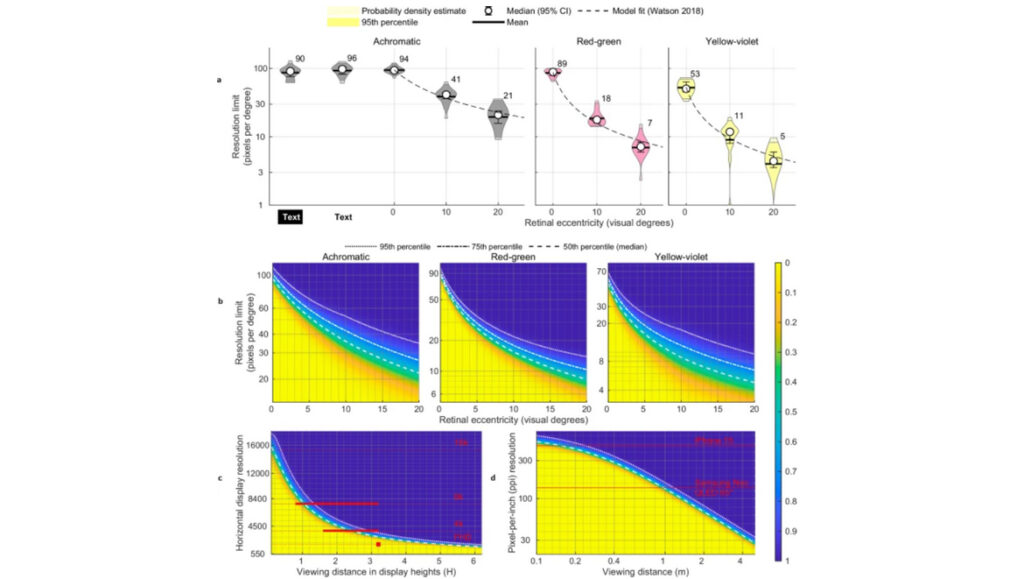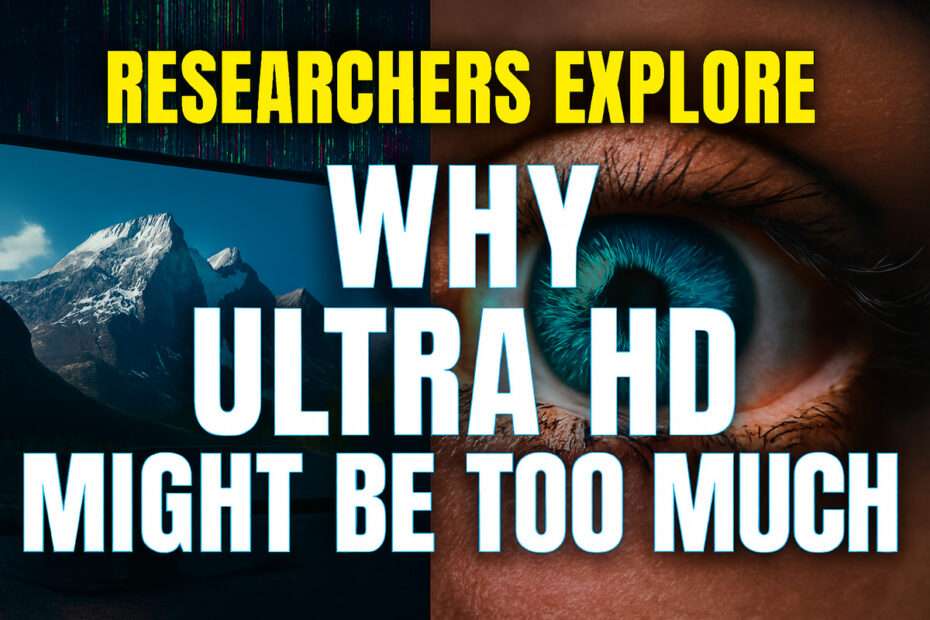Ever wonder if a screen can actually be too sharp? A group of Cambridge researchers did. They built a setup with a 4K monitor that could slide back and forth to test just how much detail the human eye can really pick up. Turns out, our vision is better than we thought, but not good enough to notice all the pixels packed into today’s giant TVs.
The study introduced the idea of “retinal resolution,” a point where adding more pixels makes no visible difference. This limit changes with screen size, lighting, and especially how far the viewer is from the display.
The researchers drew a practical takeaway for everyday viewers. In a typical living room, where someone sits roughly 2.5 meters (around eight feet) from the screen, a 44-inch TV with 2K or QHD resolution already looks as sharp as the human eye can discern. Moving up to 4K or even 8K on the same-sized display, they found, adds pixels without adding any real visual improvement.
Instead of using regular eye charts, the team tried something different. They asked people to pick out tiny lines in patterns of different colors and measured the results in “pixels per degree,” meaning how many pixels our eyes can see within a single slice of our view.

Most of us grew up hearing that 20/20 vision means perfect eyesight. In technical terms, that’s about 60 pixels per degree. But the Cambridge team found that our eyes can actually do better. When people looked at greyscale images, they could make out details up to 94 pixels per degree. The sharpness dipped a bit for color, around 89 PPD for red and green, and closer to 53 for yellow and violet.
According to Professor Rafał Mantiuk, a co-author of the study, the variation arises from how the brain interprets what the eyes capture. “Our eyes are essentially sensors that aren’t all that great,” he explained. “But our brain processes that data into what it thinks we should be seeing.”
To make their research practical, the team has created an online calculator that lets users find the ideal screen size and resolution for their own viewing setup. They hope this data-driven approach will encourage more realistic standards across the television industry.
If these findings gain traction, they could help explain the industry’s growing hesitation toward ultra-high-resolution formats like 8K. The trend is already visible; Sony, for example, has halted production of its latest 8K television models.
Maybe you would like other interesting articles?

